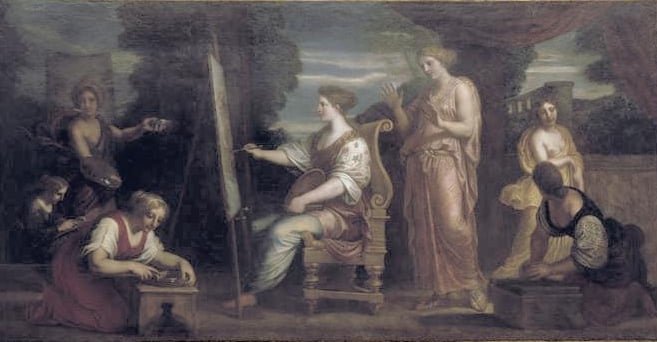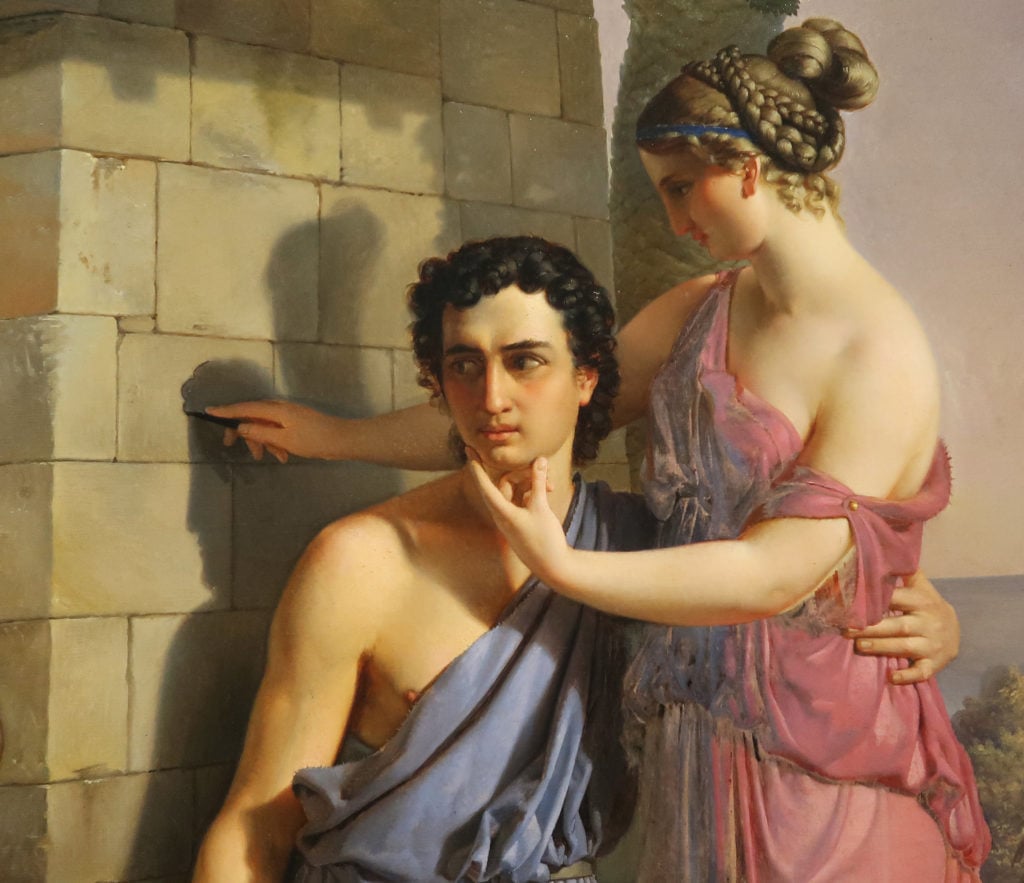
In antiquity, the pursuit of the divine arts was a purely male aesthetic practice. Yet, there were also a few important Ancient Greek female artists. It was only much later that historians began to consider their work as not only of interest but also equal value.
This was not only problematic in antiquity, however, for women today are still often grossly under-represented. For example, an article published in The New York Times in 2011 showed that in the ten years between 2008 and 2018, only eleven percent of the work museums collected were by female artists.
That is a fact that might come to some as a surprise. What it does highlight is the need for a gentle reminder that women were always more than mere muses. Rather, even at that time, they were part of the playing fields in the arts.
Overcoming the boundaries of patriarchal society
The one difference between female artists now and female artists then is that it is in many ways still easier to overcome the boundaries of a patriarchal society.
The limitations placed upon women in Ancient Greece were by the very nature of that age incredibly more stringent than those women face today. They were house-bound—required to do little more than raising the children and managing the household accounts. The only artistic endeavors allowed was, in fact, weaving.
Still, the ones who did manage to break through left their mark. There are a few, in particular, whose names history has not forgotten: Eirene, Kora, Anaxandra, Timarete, Aristarete, and Iaia.
They are four Ancient Greek female artists only known because they were mentioned in the Roman scholar Pliny the Elder’s Naturalis Historia (or Natural History), a reference book on the art leading up to his time. Others existed though as well.
The best Ancient Greek female artists according to Pliny
Timarete
Timarete was perhaps the first female painter in Ancient Greece mentioned by Pliny and, thus, of whom we know. Born in the 5th century B.C. Athens under her given name—and also called Thamyris, Thamar, and Tamaris—she was the daughter of Micon the Younger, a painter himself.
Her father was famous for his battle scenes while Timarete evidently preferred still life and portraits. Her materials were wax and tempera, and, with only those, she created works such as a panel painting of the goddess Artemis during the time of Archelaus I of Macedon placed at the Ephesus, where Artemis was particularly held in reverence.
She was also quite open in her opinion of the restrictions unfairly placed upon herself and other women, so, in the words of Pliny “scorned the duties of woman and practiced her father’s art.”
Aristarete
Aristarete is not one about whom one can say vey much, as we know so little about her. We know neither where she lived nor when. Indeed, if not for a mention by Pliny for her portrayal of Asclepius, the world may have lost her name forever in the bottomless well of Ancient Greek history.
She too was the child of an Ancient Greek painter called Nearchus and was likewise probably taught to paint by her father.
Eirene—or Irene
Irene is a fourth female aesthete from that time who lived at a time when women numbered in the few. In 200 B.C., she marched in the footsteps of her sisters by following her father Cratinus into the arts.
The image she painted of a young girl (kore) had some importance in the rites and rituals practiced by those of the cult of Demeter. One reason was that it hung at Eleusis at that time at the center of the worship of the goddess. The other is that paellua (Latin) translates from the Greek word kore, which was the name in antiquity of Persephone, Demeter’s daughter.
Iaia of Cyzikus
Iaia originally came from an old Greek colony on the southern shores of the Sea of Marmara in modern-day Turkey. Like Tamerete, she too had many names. Laila, Laia, Maia, and Lala were some, making her as well as her story one of great mystery.
She was adventurous, too, having been active in Rome during the youthful years of Marcus Varro sometime around 116 to 127 B.C.E. There, she found patronage, an unusual act for a woman at that time. Perhaps, that is the reason Pliny the Elder spoke of her work the most.
We know from him that she painted mostly women, for example, and was also a lifetime virgin. That he admired her dedication to her art is certain.
“No one else had a quicker hand in painting…her artistic skill was such that in the prices she obtained she far [outdid] the most celebrated portrait painters of the same period,” he stated, including “Sopolis and Dionysius, whose pictures filled the galleries.”
That he failed to speak of her father or his profession is another sign of his respect for her. That extended to her work as an artist as well as an individual, for Iaia’s, he obviously thought, was more than equal to those of the opposite sex. For that reason, he accordingly felt it unnecessary to mention the name of her progenitor.
It is through his own opus that we also discover her skill with the implements of her trade. Those included the brush, the use of wood, linen, and marble for painting as well as centrum.
The other feminine aesthetic
Anaxandra
Another female aesthetician was Anaxandra, who practiced painting in 220 B.C. Like Timarete, she too learned the art from her father, Nealkes, a hero who saved important art pieces from destruction following Sicyon’s liberation in 251 B.C.
Both father and daughter focused on the figures and icons of Greek mythology. Even then, apparently, there was great discourse around women’s ability to produce meaningful art.
Anaxandra’s mention itself came from Clement of Alexandria’s own work on the subject “Women as Well as Men Capable of Perfection.”
Kora of Sicyon

Kora is perhaps the first recorded ancient female Greek artist born between 700 to 601 B.C. Like the others, she was also born into the family so to speak. Her father, in fact, was Dibutades, a sculptor and potter, though not a painter.
The story goes she made a coal likeness on a wall of her lover’s face in an ancient version of graffiti. Afterwards, her father, having caught her, not only recognized the young man in the portrait but decided he liked it enough to fill it with clay. Her work was thus the first clay relief ever. The people of the cities of Nympaeum loved it so much that they kept it safe until the Romans destroyed it in 146 B.C.
Yet, while the Romans may have destroyed the work, the memory of Kora’s memory lasted far longer.
To summarize, most women in Ancient Greek times did not have much freedom when it came to enjoying the non-domestic joys of life. Yet, there were still some who managed to escape the binds of that confinement. Furthermore, although they did work consciously as artists, they also performed likewise incredible feats unconsciously as rebels and revolutionaries.
Read the full story on GreekReporter.com.